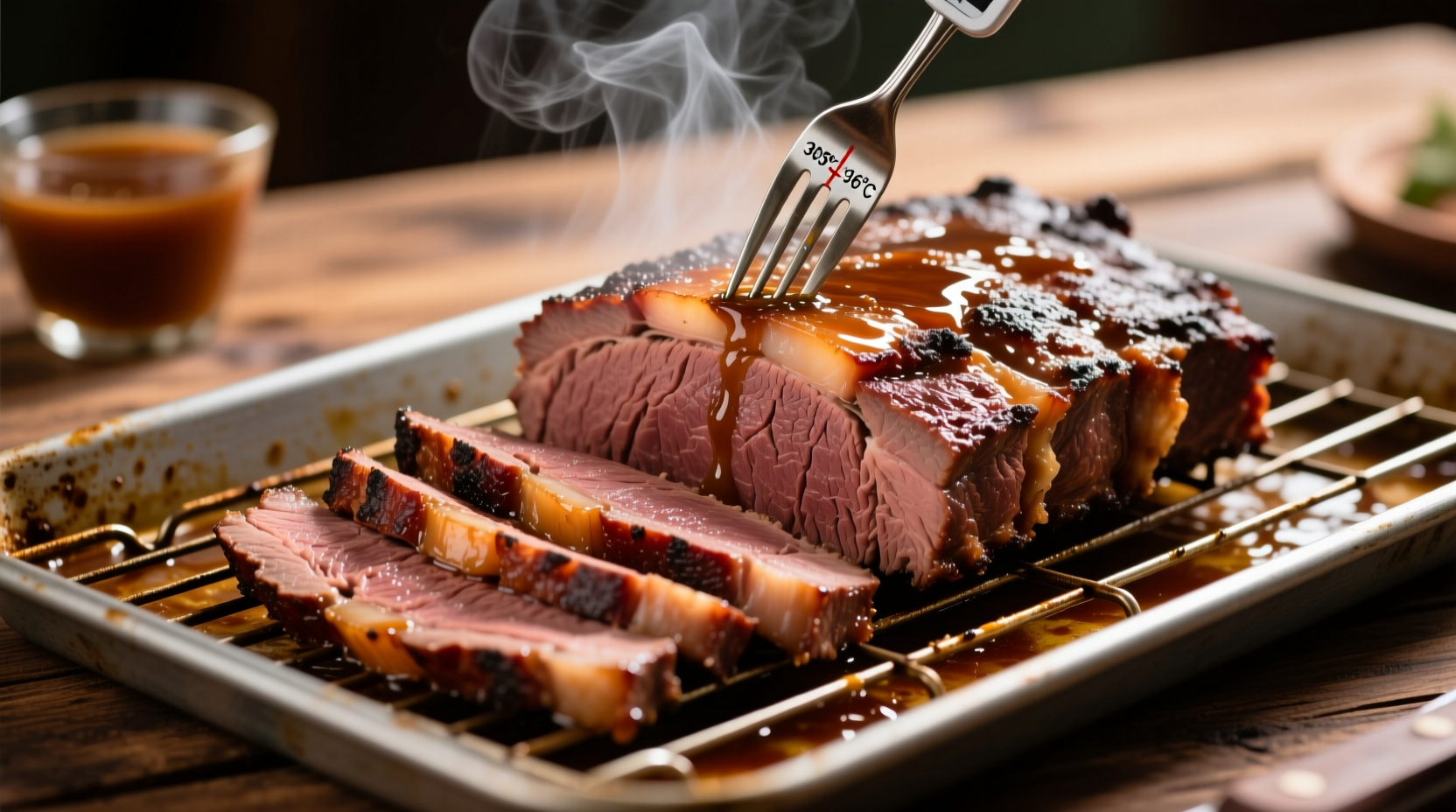Beef brisket typically requires 1 to 1.5 hours per pound when cooked at 275°F (135°C) in the oven, reaching a final internal temperature of 195-205°F (90-96°C) for optimal tenderness. For a standard 12-pound brisket, plan for approximately 12-18 hours total cooking time including resting.
Perfectly cooked oven brisket transforms tough connective tissue into succulent, pull-apart meat through precise temperature control and timing. This comprehensive guide delivers exact cooking parameters backed by culinary science, eliminating guesswork for consistently impressive results every time you fire up your oven.
Why Brisket Cooking Time Varies: The Critical Factors
Understanding what influences cooking duration prevents dry, chewy results. Brisket isn't like other cuts—its high collagen content requires specific conditions to achieve that signature melt-in-your-mouth texture.
| Temperature Setting | Time Per Pound | Best For |
|---|---|---|
| 225°F (107°C) | 1.5-2 hours | Maximum tenderness, traditional approach |
| 250°F (121°C) | 1.25-1.5 hours | Balance of texture and time efficiency |
| 275°F (135°C) | 1-1.25 hours | Faster cooking without sacrificing quality |
| 300°F+ (149°C+) | 45-60 minutes | Emergency time crunch (riskier) |
This temperature-time relationship comes from the USDA Food Safety and Inspection Service’s research on collagen conversion in tough cuts. Lower temperatures allow gradual breakdown without squeezing out moisture, while higher settings accelerate the process but require vigilant monitoring.
The Complete Oven Brisket Cooking Protocol
Preparation Phase: Setting Up for Success
Begin with a 10-14 pound USDA Choice or Prime brisket with even marbling. Trim excess fat to 1/4-inch thickness—this layer protects the meat during cooking while rendering down for flavor. Apply a 50:50 salt-pepper rub (or your preferred seasoning blend) 12-24 hours before cooking to enhance flavor penetration.
Place the brisket fat-side up on a wire rack inside a roasting pan. Insert an oven-safe meat thermometer into the thickest portion, avoiding fat pockets. Preheat your oven to your selected temperature (275°F recommended for beginners).
Cooking Phase: Managing the Critical Stages
When the internal temperature reaches 160°F (71°C), you'll hit the “stall”—a plateau where evaporation cools the meat. This natural process can last 2-4 hours. Resist the urge to increase oven temperature. Instead, maintain steady conditions while collagen slowly converts to gelatin.
Continue cooking until the thermometer reads 195-205°F (90-96°C). At this range, collagen fully transforms and muscle fibers separate easily. The probe test confirms doneness: a thermometer or skewer should slide in and out with almost no resistance.

Resting Phase: The Non-Negotiable Final Step
Remove brisket from oven and tent loosely with foil. Rest for 1-2 hours—this critical step allows juices to redistribute. Cutting too soon releases precious moisture onto your cutting board rather than staying in the meat. The internal temperature will remain above 140°F (60°C) during proper resting, staying out of the USDA’s danger zone.
Avoiding Common Brisket Disasters
Even experienced cooks encounter issues. Here's how to troubleshoot:
- Dry brisket: Usually caused by exceeding 205°F internal temperature or insufficient resting. Maintain precise temperature control and never skip the resting period.
- Chewy texture: Indicates insufficient collagen breakdown. Return to oven until probe test shows no resistance, even if past estimated time.
- Burnt exterior: Results from oven temperature too high or inadequate fat cap. Maintain temperatures below 300°F and ensure proper fat coverage.
When Standard Guidelines Don't Apply
These cooking parameters assume specific conditions. Adjust when:
- Using a convection oven: Reduce temperature by 25°F (14°C) as circulating air cooks faster
- Cooking frozen brisket: Add 50% to estimated cooking time and monitor closely during initial thawing phase
- Altitude above 3,000 feet: Increase cooking time by 25% as water boils at lower temperatures
- Smaller cuts (under 8 pounds): Check for doneness 2 hours earlier than estimated time
Professional pitmasters have refined these techniques over decades. America's Test Kitchen research confirms that the 275°F method delivers optimal results for home ovens, balancing cooking time with texture development.
Serving Your Perfectly Cooked Brisket
Slice against the grain into 1/4-inch strips—this shortens muscle fibers for maximum tenderness. Serve immediately with your favorite sides. Leftovers make exceptional sandwiches; store in airtight containers for up to 4 days or freeze for up to 3 months.
Advanced Techniques for Next-Level Results
Once you've mastered basic oven brisket, experiment with:
- The Texas crutch: Wrap in butcher paper at 160°F to power through the stall while maintaining bark formation
- Temperature ramping: Start at 225°F for 6 hours, then increase to 275°F to finish
- Injection marinades: Boost interior moisture with a 50:50 beef broth Worcestershire solution











 浙公网安备
33010002000092号
浙公网安备
33010002000092号 浙B2-20120091-4
浙B2-20120091-4